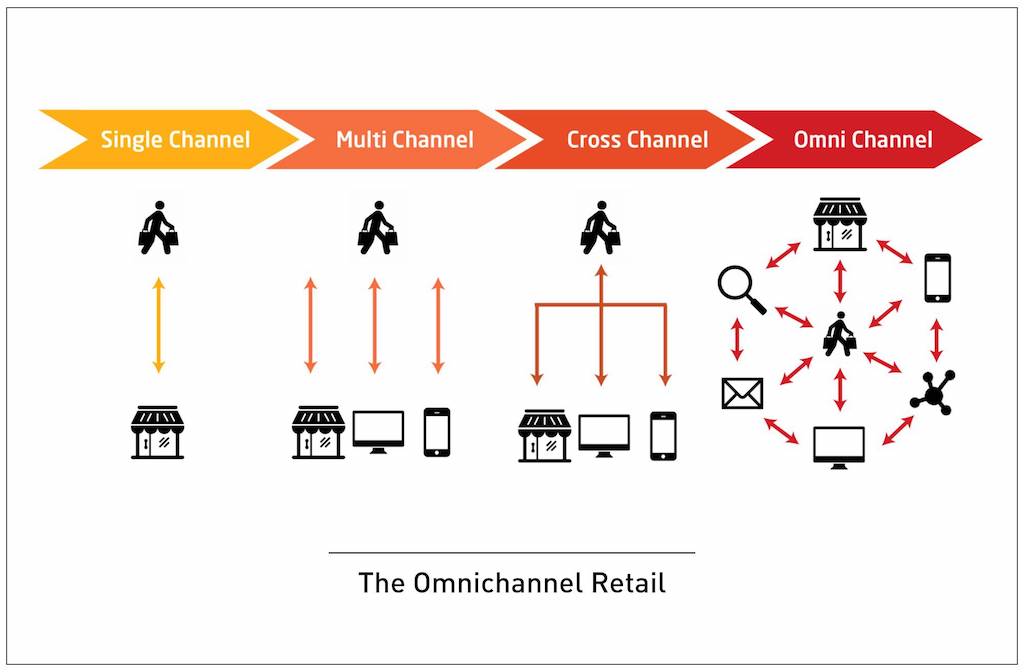In the blink of an eye, we’ll be in 2022. Since the COVID-19 pandemic started, almost all businesses worldwide have been suffering from its impact. Except for the eCommerce industry!
Needless to mention that never before has the retail landscape been as profitable as it is now.
As per a survey by Statista, while retail eCommerce sales amounted to 4.28 trillion US dollars worldwide in 2020, e-retail revenues are expected to surpass around 5.4 trillion US dollars in 2022!
From advanced voice search technologies and personalized product recommendations through chatbots to making business practices more sustainable – many new trends will rule in the 2022 eCommerce scenario.
Top 11 eCommerce Trends for 2022 and Beyond
If you’re into the eCommerce industry, it’s high time to dive right into the list of key eCommerce trends in 2022.
1. Increased prevalence of voice search

“Alexa, what is the price of the Xbox One?”
“Hey Siri, what are my Whole Foods deals?”
According to Finances Online, shoppers of voice-activated speakers were estimated to surpass 25.6 million by the end of 2020.
Today, voice assistance on smartphones, home smart hubs, and TV remote controls have come a long way.
Moreover, 65% of the demographic between 25 to 49 years old uses different voice-enabled devices at least once daily.
Amazon Echo dominates the eCommerce market, holding more than two-thirds of the share. Then comes Google Home, followed by Apple HomePod.
Since voice search directly influences search engine results and shopping outcomes, most eCommerce sellers should optimize their sites for mobile applications and websites.
At a minimum, they need to prioritize information, such as website details, physical address, business hours, contact number, payment methods, etc., that buyers ask for.
2. Live video shopping from the sales outlets
The pandemic has influenced the trend of video consultations where the sellers from the sales outlets can directly communicate with their clients. Here is how the process follows:
A user browses through the eCommerce site, picks a product, and learns its features and necessary details. Users can connect to the online shop assistant through live video if they need additional information or consultation.
Now, the user can get an opportunity to have a virtual tour of the outlet, which is more like a physical shopping experience.
The success rate of live video consultation is quite high as every third consultation is able to close the deal. As it is convenient, time-efficient, and offers a more personalized shopping experience, this trend is here to stay even when the pandemic is over. Learn more here.
3. Augmented reality for real-time visualization
Let your customer visualize their purchase in real time. With augmented reality (AR), customers don’t need to guess their desired product.
Let’s say a shopper plans to buy a new sofa for his living room from your online store but is doubtful if the sofa would match his home interior or how it would look in the living room. With the use of AR, this shopper can view the 3D version of the sofa in his environment.
The use of AR is perfect for:
- Furniture and home decor
- Jewelry
- Medical devices
- Sports goods
- Clothing items
More and more eCommerce businesses should implement this advanced technology to provide customers with in-store-like shopping experiences.
4. Omnichannel sales strategy

A classic visualization of omnichannel retail.
The more you offer your products on different platforms, the more buyers you get.
With the increasing trend of online shopping, potential customers prefer to decide where and how to make the deal. That’s why many of them tend to follow the advertisements on Facebook and Instagram, where a link takes them to the original product page.
When potential customers view an advertisement on various platforms, they become more convinced about the product’s credibility. Since figuring out a customer’s realization channels is tough, it’s better to unify that customer’s base and communication base in one place.
Integrating a CRM system allows eCommerce sites to manage numerous channels and analyze data effectively.
5. Rise in subscription models
Due to the massive success of the subscription model, many savvy businesses are trying new methods to influence buyers to opt for subscriptions. This way, buyers remain loyal for months and years by returning to the online stores repeatedly.
Before shifting to the subscription model, eCommerce businesses should remember that this strategy needs a long-term mindset.
In addition, a close eye on unit economics and technology use can bring success to this model.
6. Chatbots for customer-service management

Customer service is a big part of all businesses, regardless of size and medium. Handling customer queries and instantly solving them is crucial for any business’s reputation.
Only a handful of businesses can afford to hire a large team of customer-service representatives.
Thanks to the advancement of chatbots in the past few years, has simplified the way businesses handle customer service. In the coming days, most mid-sized and large
eCommerce businesses are going to benefit from integrating chatbots into their customer service for multiple reasons:
- Answering frequently asked questions (FAQs)
- Informing customers about current offerings
- Suggesting product recommendations
- Collecting feedback from surveys
- Obtaining information about visitor’s demographics
In short, most eCommerce businesses need to follow this trend of chatbots for communicating with customers on multiple platforms simultaneously in the upcoming days.
7. Faster payment methods

You may have created an awesome eCommerce site and sourced hundreds and thousands of products.
Unless you set up instant payment processing, you can’t provide your customers with a smooth and straightforward shopping experience.
Trust can’t be lost at any cost when it comes to payment. Hence, all eCommerce businesses should ensure that their customers can pay instantly without getting redirected to another platform or registration.
If your business already accepts payment via debit or credit card, it’s time to consider other instant payment options as well:
- Digital wallets like PayPal, Google Pay, Amazon Pay, and Apple Pay
- Buy-now-pay-later solutions, like Afterpay, Affirm, Sezzle, and Klarna
- Digital currencies like Bitcoin or other cryptocurrencies
8. More user-friendly buying experience
Users will shop and return to an eCommerce site only if they find it convenient and easy to navigate.
Nowadays, no one has time to waste on a shopping site that is not so-user-friendly. The moment a user faces difficulty placing an order, he or she will leave the site and search for another store.
Most eCommerce sites are focusing on certain ideas to ensure a more user-friendly buying experience for their clients:
- Placing an order in one click
- Faster checkout
- Shopping directly on the product page
- Using all popular payment options
- Saving user’s data
- Displaying the price, duration of delivery, and product deals
- Offering installment
9. More focus on green consumerism

With the rising environmental awareness, consumers and business ventures are willing to focus on a sustainable world. In this scenario, green consumerism with sustainable products is definitely a trend for upcoming years.
The sustainability of the eCommerce industry has become a need of the hour.
Statistics revealed that “commercial road transport and shipping account for 30 and 10 percent of transportation CO2 emissions worldwide, respectively.”
Many eCommerce businesses are willing to embrace practices like biodegradable packaging, paperless payments, and recyclable supplies.
In the upcoming days, eCommerce retailers should also take the responsibility for a greener supply chain and adopt sustainability.
10. Personalized products and shopping experience
Suppose you think that just saying “Hello, [name of the customer]” is enough to create a personalized shopping experience for your expected buyer. In that case, it’s time to reconsider your marketing strategy.
Today’s customers expect a much more seamless shopping experience that needs personalization.
Implementing smart website features, machine learning, and online tracking technologies have become indispensable for every business to ensure buyers’ highly customized and individualized shopping experiences.
Product personalization at a mass scale is another great way to increase sales opportunities.
11. Automated B2B transactions
As the B2B segment evolves, more focus will be paid to B2B eCommerce trends. It means more automation, automated accounts payable, more reordering, more integration of multichannel selling, and so on.
In a nutshell, whether you’re serving B2C or B2B eCommerce segments, make sure you adopt the latest technology to solve your clients’ pain points.
Key takeaway
The world of eCommerce is rapidly evolving to meet customers’ preferences and beat the competition. From embracing emerging technologies to automating marketing and products – eCommerce companies are following whatever is trending.
E-commerce trends 2022 also focuses on creating a comfortable and eco-friendly environment for clients by fulfilling their increasing demands and expectations.
So, we can say the upcoming eCommerce trends will eliminate the customer’s doubt – whether to shop online or not, as these new trends will surely persuade everyone to the digital market.











